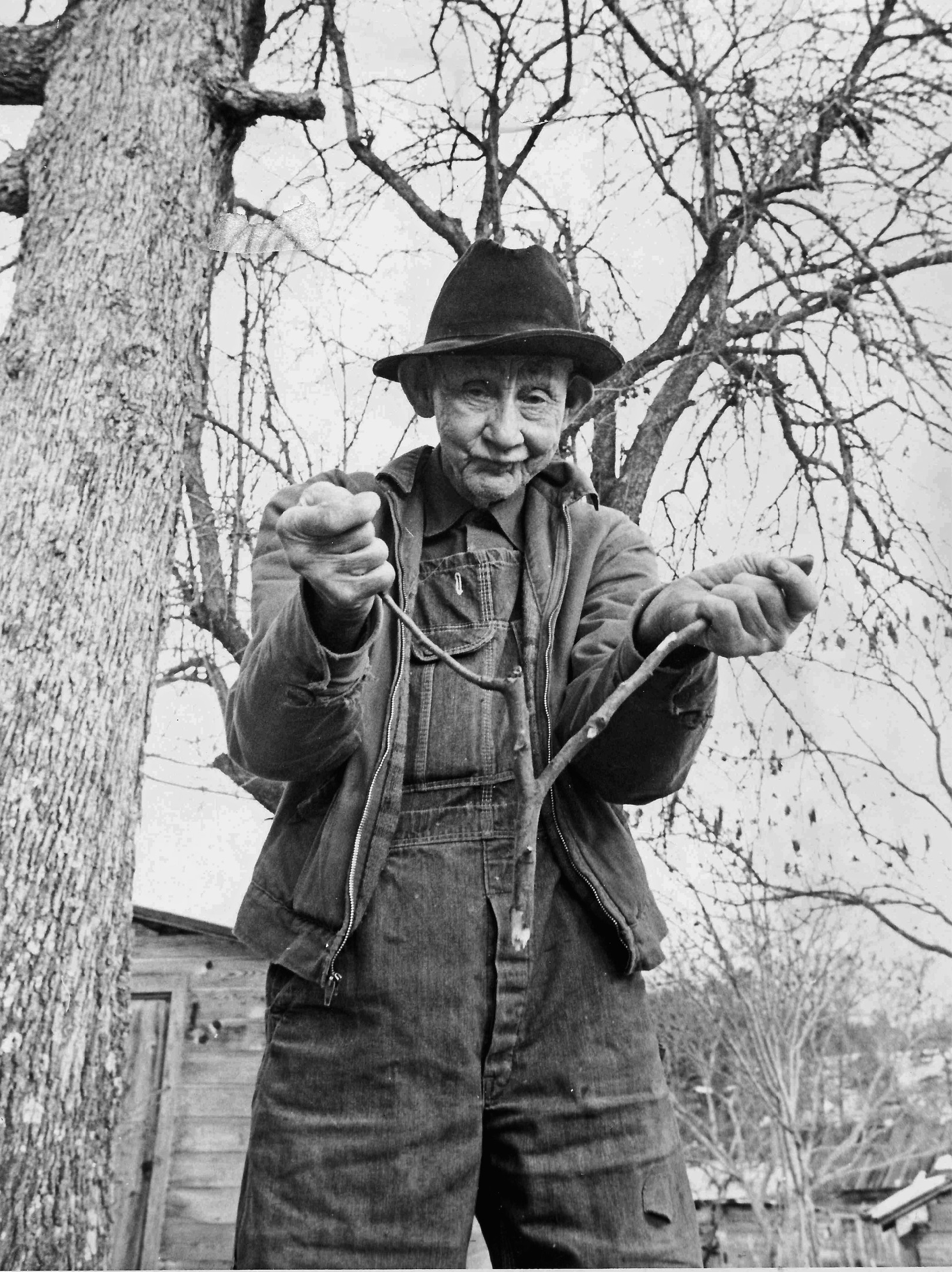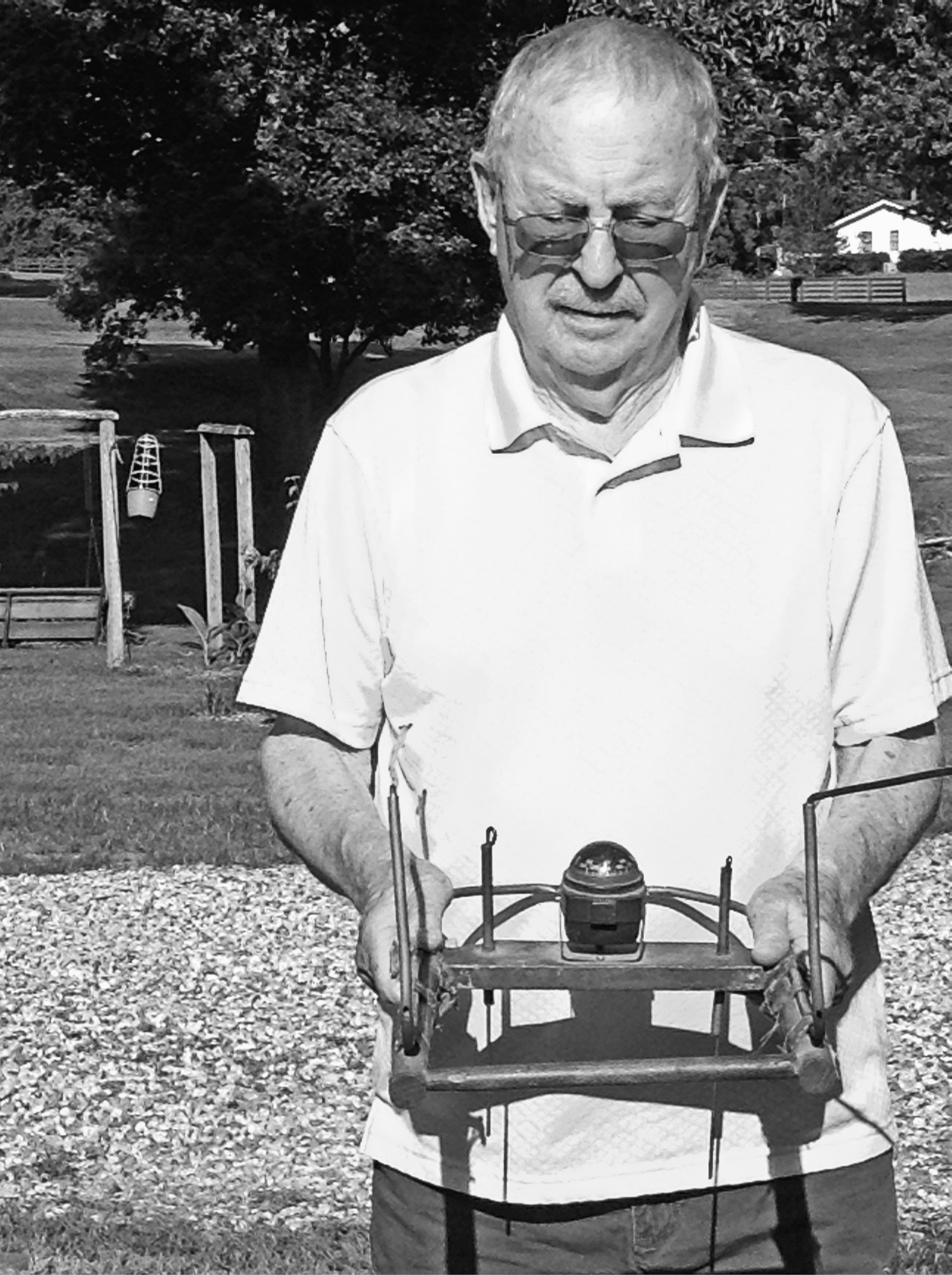Water Dowsers
The ancient art of finding underground water
MOSES MAY HAVE BEEN the first good water dowser. The Holy Bible’s book of Exodus says he could coax water from a rock just by striking it with a stick, and according to Numbers 20, he could simply talk to a rock and bring forth water. But Moses, a hardheaded fellow sometimes, decided to smite the rock again, instead of speaking to it, as God commanded. And God was not pleased.
But the fact is, according to the Bible, Moses struck water both times, albeit with some divine assistance. Locating sufficient underground or under-rock water before you dig or drill is a little more difficult today, but it’s not impossible.
Back in 1973, the late Charlie Hammonds Patton of Banks County, Georgia, used a forked stick from a peach tree to find underground water, and he didn’t have to smite anything. He just watched for the stick to tilt downward, presumably toward water. He always found what he was looking for, he said in an interview. In that same county, the late Hoyt Duncan made a contraption out of wood with copper tubing attached. And according to his son, Paul Duncan, he too found water.
Hoyt Duncan’s great-grandson, Dee Rylee of Banks County, who along with Rickey Hicks of White County, Georgia, owned Northeast Georgia Well Drilling, used L-shaped copper rods to go water hunting all over the region.
But what does the movement of a forked stick or copper rods have to do with finding water? Hicks has one answer. “When you’re witching—we call it witching for water—I think actually what it marks is the seam or crack in the rock [underground]. Water can’t run through solid rock. So that’s where the water is at: in the crack or seam. But, every now and then, you’ll run into a dry seam. It won’t have water in it. It’s got to be some magnetic pull,” causing the dowsing device to move.

PLATE 15 Mr. Patton ready to dowse
Does he think witching for water is a gift?
“I think it’s more of your body makeup,” says Hicks, who has retired from the well business and sold his part to Rylee. “You can call it a gift if you want to. It’s the way your body is made up.”
Charlie Patton says all you need for successful dowsing is “enough electricity in your body.” A retired well digger, he has not heard of the controversy surrounding water witching; many believe that the person holding the divining rod controls its movement. He’s never heard the word “rhabdomancy,” which is the technical name for divining, or dowsing, with rods or wands. All he knows, he says, is what he was taught by “a feller name a Suggs” in the 1920s. With that knowledge, he brags, he has found water for maybe two hundred people, without a miss.
I ask Patton to demonstrate his dowsing technique: He cuts a forked stick from a peach tree located behind his simple, four-room home and, grasping the prongs, puts the point of the Y-shaped stick into his mouth and positions it straight up.
With his palms turned outward and his eyes focused trancelike on the point, he begins to walk toward the side steps of his home, being careful to hold the stick steady. Just before he reaches the steps, the stick appears to pull itself downward and in a second is pointing toward the ground. Patton then walks toward the steps from another direction, and when he reaches the same spot, the dowsing stick does its thing again.
“There’s a vein of water that runs right under them steps,” says Patton. “A forked stick from any tree that grows fruit will work in huntin’ water.”
More than forty years ago, a study showed an estimated twenty-five thousand water diviners still practicing in the United States. Today, that number probably is smaller, says Lee R. Barnes, Jr., of Waynesville, North Carolina, vice president of the Appalachian chapter of the American Society of Dowsers. One indication might be the number of people who attended Barnes’s water-dowsing classes at a chapter conference near Asheville, North Carolina, in March 2015. Of the 260 attendees, only about five percent were interested in water dowsing. “Dowsing is more diversified today,” says Barnes. “Our local chapter is about forty years old. Originally, it was mostly water dowsers. Now it’s more metaphysical people, body energies and other stuff.”
Lee Barnes usually isn’t dowsing for energy; he’s looking for underground water. And he offers a money-back guarantee if he doesn’t find it. Now that he’s semiretired as a land consultant—he has a PhD in agriculture horticulture—dowsing for water provides his cash flow.
Asked about his success rate, he says it depends a lot on the well driller. “With my best driller, I have a ninety-five percent success rate,” he says. “I’ve had about two hundred wells drilled, and on average, I have a better than ninety percent overall success rate. When I can, I go back and check to see if the driller has drilled straight. And they don’t always drill straight.”
In western North Carolina, where Barnes lives and works, well drillers normally penetrate crystalline bedrock to get to underground springs. And, like Rickey Hicks, Barnes believes that when dowsing, he senses “the electromagnetic differences in the bedrock cracks, and that’s where the water is flowing.” The depth of the drilling, he says, is normally anywhere from two hundred to four or five hundred feet, sometimes more.

PLATE 16 Paul Duncan uses his father’s dowsing contraption.
Barnes teaches classes on dowsing; in fact, he was named the 2012 Educator of the Year by the American Society of Dowsers. Besides water witching, his students learn how to find old railroad routes, whose tracks have been gone for ninety years. In those cases, he says, the ground was probably magnetized by the physical wear of steel wheels on steel rails. So the dowsing rod reacts to the magnetization. In dowsing for old gravesites, which he also has done, he believes the divining rod detects changes in electromagnetic properties resulting from the digging and refilling of the grave. “Some of this I can explain scientifically,” he says. “Other things are more difficult.”
Charlie Patton and Hoyt Duncan didn’t have such scientific explanations. They just knew that their dowsing devices worked. Duncan’s dowsing instrument was a contraption he made from the back of a child’s chair with copper rods attached. When over a vein of water, two of the rods would turn around and around, his son, Paul Duncan, says. “If it turned one way, the water was under rock; if it turned the other way, it was above rock.”
Hoyt Duncan found 150-something wells for a driller in Lavonia, Georgia, his son says. He found water in Rabun, Towns, White, and Hart Counties in Georgia. One small town hired two professionals and one water dowser to find water and ended up with three wells. But Hoyt Duncan came in and “found enough water to furnish the town with one,” his son says. Duncan never charged for his services, although he would accept a chew of tobacco if it was offered. He was afraid he’d lose his abilities if he took money, Paul Duncan explains.
When he was ninety-nine years old, Papa Hoyt checked himself in at a nursing home, where he spent his last four years. When one of his nurses asked if he could find water for her, Duncan responded, “Yeah, but you’ll have to lay down on the floor.”
Can anyone learn to dowse for water? “I think so,” Barnes says. “I have taught close to eight hundred or nine hundred people in an hour, two-hour or longer classes. How to do it over a water hose and then over a culvert and then over a completely hidden site. I had maybe five or six people who did not get a response. I think it was because they were in fear or were blocking themselves somehow.”
It was Papa Hoyt who taught Dee Rylee and Rickey Hicks how to dowse for water. They both use L-shaped copper rods.
Rylee compared his dowsing method to techniques used by hydrogeologists. “In talking to them,” he says, “they put ohm probes down in the ground, just like an ohmmeter, and then take resistance readings. What they’re hunting is voids in the rock. Everybody says you’re hunting for water, but you’re hunting for cracks. You’ve got to have cracks to flow through because we’re in granite.”
The origin of the divining rod is lost in antiquity. The “rod” is mentioned many times in the Bible connected to miraculous performances, especially in the books of Moses. If you believe that Moses was a water dowser, as passages in Exodus and Numbers imply, then, dowsing goes back more than seven thousand years. Though it is certain that rods or wands of some kind were in use among ancient peoples for forecasting events and searching for lost objects, little is known about how they were used or what relation, if any, they may have to the modern device.
But does the divining rod really work? In controlled tests, researchers failed to find a correlation between the rod’s actions and the locating of underground water. But don’t try to tell that to people who still practice, or believe in, the art of dowsing for water.

PLATE 17 Rickey Hicks uses metal rods for dowsing.
Asked what he tells skeptics, Dee Rylee says: “I tell them God put it down there, we just got to find it. My theory is, it’s not foolproof, but it helps better than anything else we’ve got.” People might spend two to three thousand dollars to get hydrogeologists to hunt for water, he says, “and I’ve had friends who’ll have flags all over the yard, and the hydrogeologists will tell you which flags to drill first. Not much water. And then you witch it and that well will be good. And it’s not one of the flags.”
Says Lee Barnes: “I can show a lot of wells that were unsuccessful or dry, and I found good water within twenty, thirty, forty feet of them. That convinces me that I am sensing something that does lead to water.” Charlie Patton says flatly that he never missed finding adequate water.
Did Hoyt Duncan ever fail to find water? “Not that I know of,” his son says. “Maybe not enough as needed.” Rylee says that during a drought about fifteen years ago, several vein pockets turned out to be dry.
Rickey Hicks recalls a chicken grower who wanted a well drilled in a certain spot, one convenient to his broiler houses. That’s where he and Rylee drilled. “We never did hit water,” Hicks says. “Then we went up on top of a hill and marked it where we wanted to drill, went three hundred and twenty feet and got twenty-something gallons a minute.”